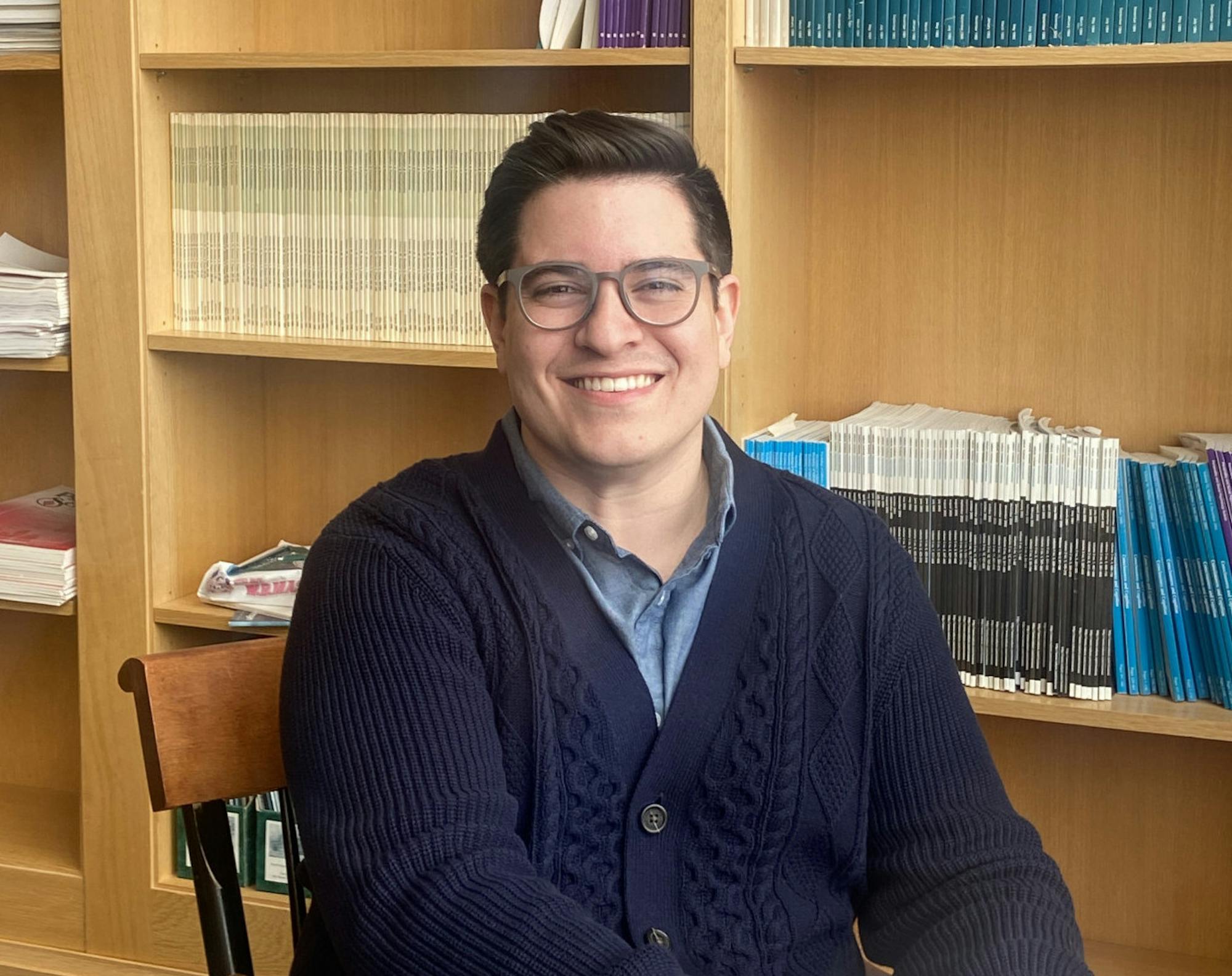On March 23, Antônio Mello, a Ph.D student working in Dartmouth’s Social Perception Lab, published an article titled “Visualising facial distortions in prosopometamorphopsia” in The Lancet, a peer-reviewed medical journal. Prosopometamorphopsia is a rare psychoneurological disorder characterized by distorted perceptions of faces in terms of shape, size, texture or color. The Dartmouth sat down with Mello to discuss his groundbreaking research.
Tell me about your background as a researcher. What did you do before pursuing this research?
AM: I come from Brazil, where I was a lawyer. I got interested in eyewitness memory — especially how people perceive and memorize information about a crime scene and then talk about that in a court scenario or with the police. One thing led to another and I got interested in face processing more generally. Then, I applied for a position here as a Ph.D student with psychological and brain sciences professor Brad Duchaine, who studies face perception and face recognition. He is one of the leading researchers in the field.
What inspired you to pursue research in the area of prosopometamorphopsia specifically?
AM: This is a new line of research in the lab, and we are super excited about it because even though PMO has been known as a neurological condition for more than 100 years now — the first case reported was in 1904 — we have fewer than 100 cases reported in the literature.
This is a condition that some people already knew about, but the case reports are very rare. We felt like this research could give us an opportunity to explore broader questions from visual neuroscience. When we learn about, for example, how face distortions work, we also learn about how our brains represent faces.
I’m interested not only because the condition itself is very interesting, but also because the condition can help us to explore old and new questions from visual neuroscience using PMO research.
What was it like to interact with individuals affected by PMO? Did participants experience anything common and/or peculiar due to PMO?
AM: One of our favorite aspects of this research is that these people — even though they are facing a lot of challenges — are very willing to help with the progress of the research.
Another thing that surprised us was that some of our participants came from previous experiences with neurologists, psychiatrists and psychologists. Even though those professionals were willing to help them with their problems, at the same time, they were not aware of PMO. So, in some cases, these people are misdiagnosed. They receive, for example, the diagnosis of schizophrenia or Alzheimer’s disease. In some of these cases, it actually led them to be prescribed the wrong medications.
This also surprised us, and we are glad about the media coverage of the paper because we are already receiving messages from neurologists and psychiatrists who were not aware of the condition. Now they are, and they will probably consider a different label for what their patients are experiencing.
What challenges have you encountered in the lab? How have you addressed them?
AM: This is a neuropsychology lab, so we try to understand how the brain works by also understanding how it doesn’t. For example, by trying to investigate people who have problems with certain aspects of face processing, we also understand how face processing typically works with people who don’t have those problems. One of the most challenging aspects of that is finding these people.
Our website is available for people to get more information about their condition once they are experiencing it, which actually helps them to reach out to us. That’s the way we’ve found to circumvent the challenge of not having too many participants available. We’re trying to spread information about the condition and help people find us.
What interesting findings or insights have you discovered so far?
AM: When it comes to PMO, everything is surprising. For example, one of the most surprising findings that we have observed is that some of these participants seem to present color effects. They are experiencing the distortions that are modulated by the presence or absence of color. More specifically, for some of them, certain color hues will make the distortions increase, and certain color hues will make the distortions decrease.
So, it was surprising for us that when one patient was wearing green-tinted glasses, the distortions that he would see on real-life faces would actually decrease. When he went to Walmart, for example, he usually used those green-tinted glasses because that would help him to perceive fewer distortions in people’s faces.
How do you think your research could potentially impact society?
AM: We think the first thing is to raise awareness about a condition that is rare and that people are not well-informed about. People who were not reported in the literature but who have experienced the distortions are out there. So raising awareness about the condition is also a way of finding those people and trying to understand what they are going through.
For some of the things we have been studying for many decades, we can now try to explore those questions from a perspective of face distortions.
What are your next steps?
AM: Most of my next projects are related to PMO because we have many unexplored questions to investigate. The factors that could impact distortions is one of these questions. I’m very interested in all face processing-related subjects, so whenever it comes to a face-processing question, I’m there to try to answer it.
This interview has been edited and condensed for clarity and length.




